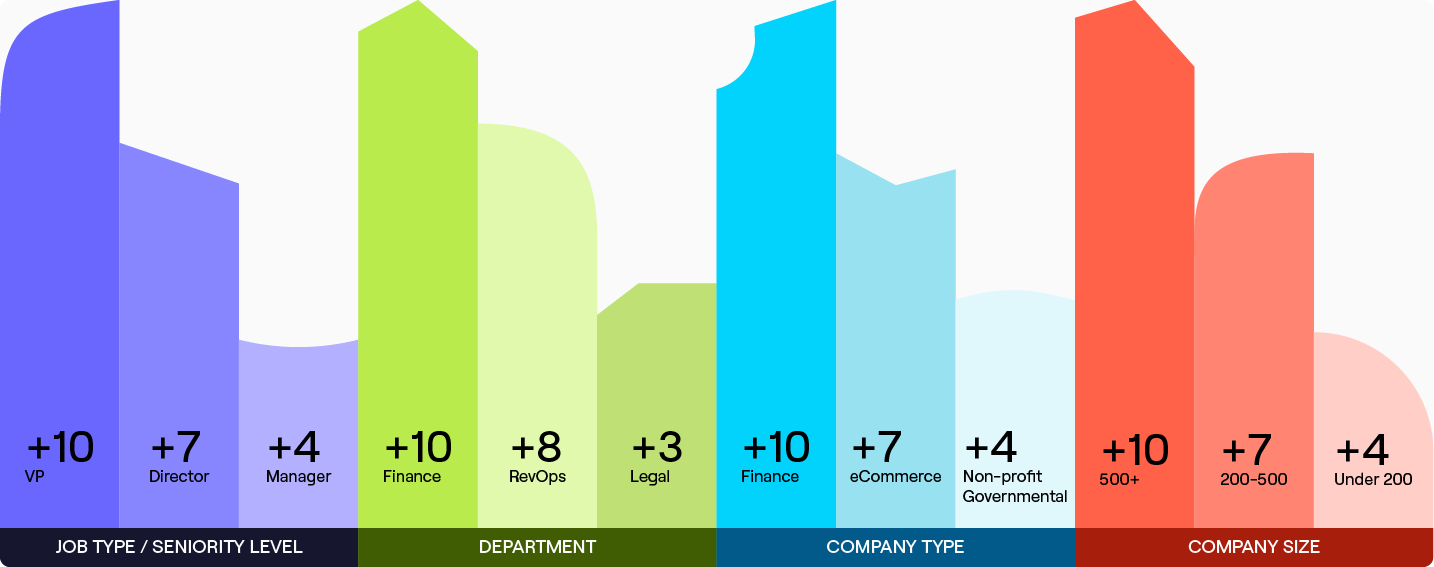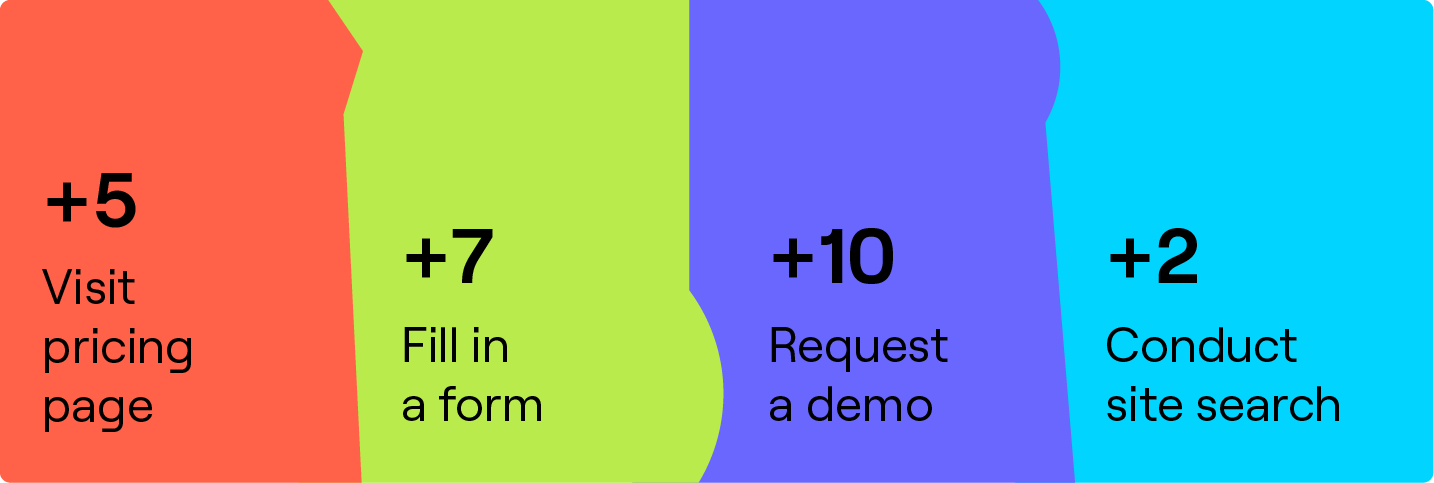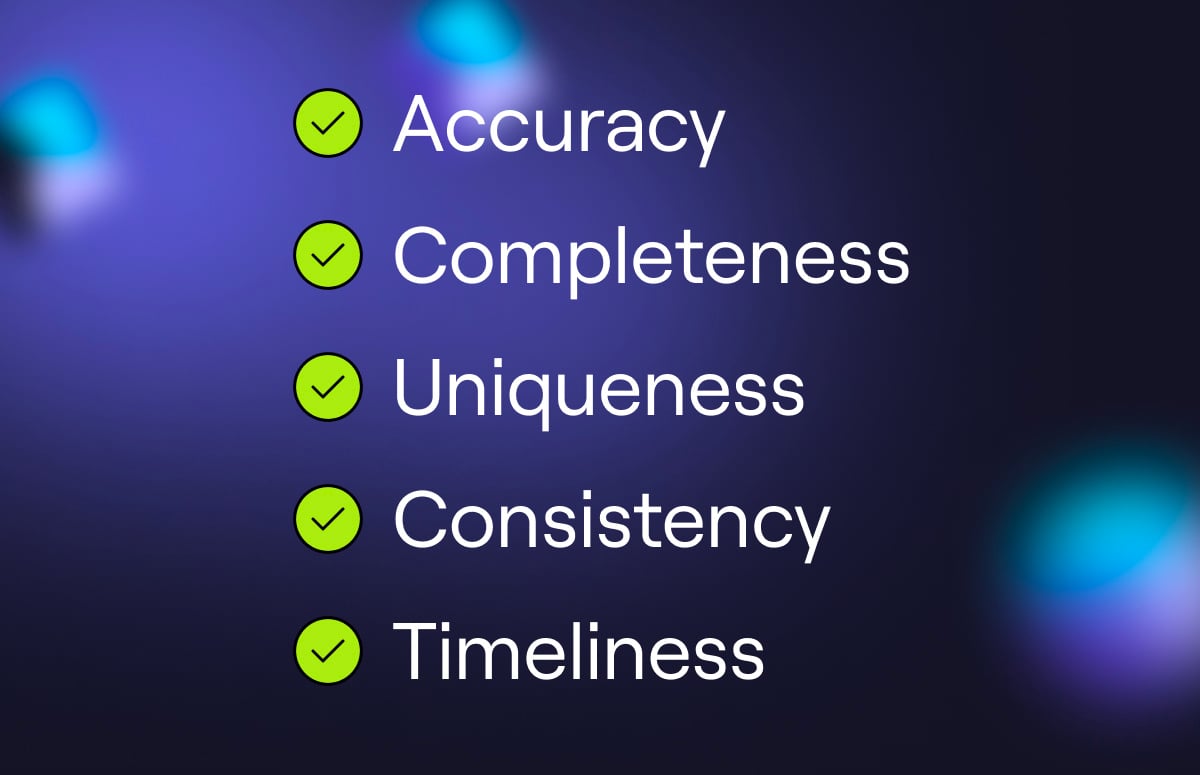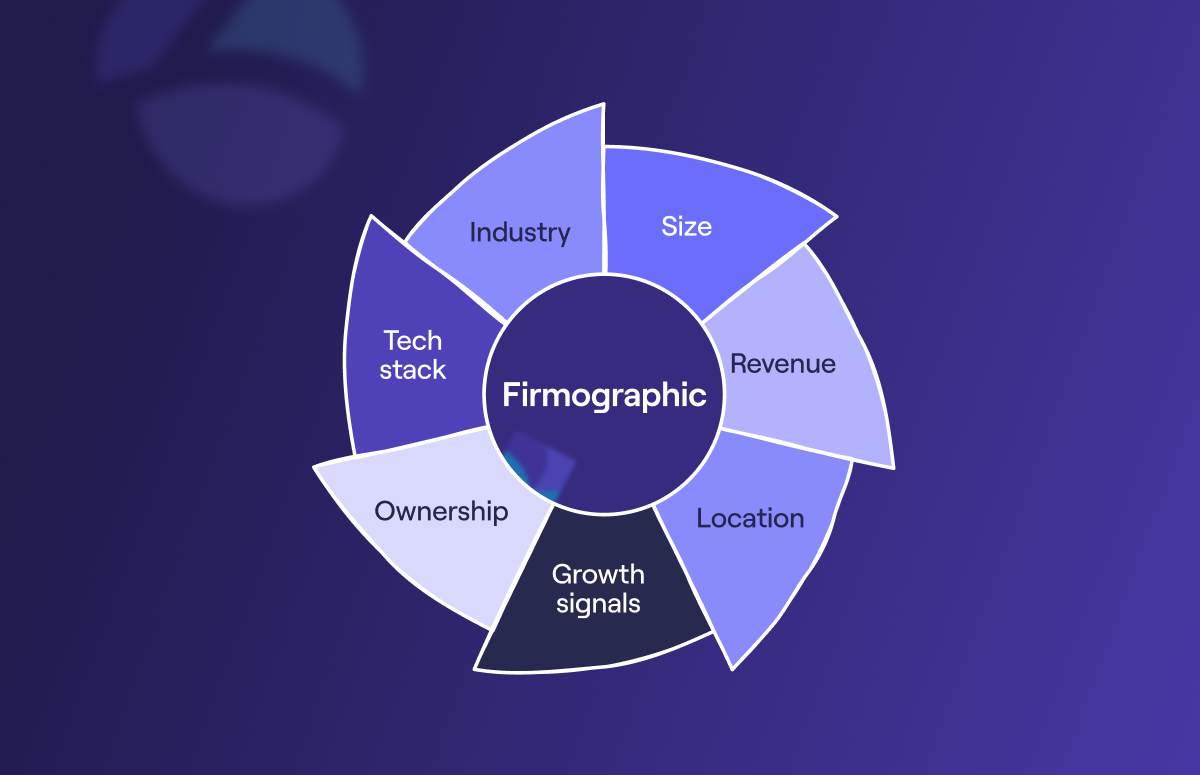What Is Lead Scoring? Definition, Models, Best Practices
Your marketing team’s firing on all cylinders! Leads are pouring in by the hundreds.
But here’s the challenge: your sales reps can’t chase them all. Who gets a call first? Who gets skipped?
That’s where lead scoring steps in.
It cuts through the noise, eliminates the guesswork, and helps sales focus on the high-quality leads most likely to convert. Marketing knows exactly when to pass the baton, helping sales to zero in on closing.
In this guide, you’ll learn:
- What lead scoring is (and why it matters).
- How to calculate actionable lead scores.
- What are the most effective scoring models.
- Smart tips to boost lead quality and drive sales efficiency.
Scroll 👇 to get started (or use the menu to jump to a section).
What is lead scoring?
Not all leads are created equal. Some are ready to buy today. Others? Just browsing.
Lead scoring helps you tell the difference, fast. How does it work?
When potential leads come in, you assign them points based on their behaviours and attributes. Once they accumulate a set number of points, they become qualified leads.
This helps you to spot promising prospects, meaning you can push them to the front of the line.
With a solid scoring model, you’ll know exactly who’s worth your sales efforts. As leads hit a certain score, they’re flagged as sales-ready - ripe for outreach and primed to convert.
The result?
Less guesswork, higher conversion rates, and more closed deals.
How do you calculate a basic lead score?
That’s the definition out of the way!
Now, how do you work out the lead score?
While lead scoring differs from company to company, there are common criteria - like engagement, demographics, and behaviour - that most teams use to gauge a lead’s likelihood of conversion.
To start with, assess the key attributes of prospects who became customers and those who didn’t. Then, compare the attributes and decide which of them describes your business’s ideal leads.
Here are some examples of lead scores for behavioural attributes:
- +5 points for visiting your pricing page.
- -10 points for visiting your careers page.
- +5 for joining a webinar or downloading marketing content.
- +10 for opening a promotional email.
- +10 if a prospect is a middle manager and +25 if they’re a company decision-maker.
Why is lead scoring important?
Lead scoring is important for sales and marketing because it helps identify where leads are in the sales process.
It’s crucial in determining whether a lead should continue to be nurtured as an MQL or handed over to your sales team as an SQL.
The lead scoring methodology is especially important in B2B, where sales cycles are longer and multiple stakeholders are involved in every deal.
For companies, lead scoring saves time, lowers lead generation costs, and improves sales and marketing alignment.
For customers, lead scoring creates a better experience; salespeople know how and when to approach them with the right kind of messaging, wherever they are in the sales funnel.
What are the best lead scoring tools?
Have you considered Cognism as a powerful scoring tool for your business?
By enriching your CRM with accurate firmographic and intent data, Cognism helps you build smarter scoring models that prioritise leads with high potential for conversion.
With key insights like job titles, buying signals, and company size, your reps can identify and focus on high-value leads.
Take an interactive tour below 👇
Outside of Cognism, many popular CRMs, such as HubSpot, include lead scoring features.
When choosing a tool, look for features like pipeline and opportunity management, detailed lead insights, and CRM syncing. You can also check for advanced lead scoring features like tracking, routing, and predictive analytics.
⚠️ Need help choosing a tool? Check out Cognism’s list of B2B marketing platforms.
What should you consider before implementing scoring models?
If your sales cycle is short and you can easily close leads, introducing a scoring process might be overkill for your business.
Likewise, if your reps are busy chasing leads and your customer conversion rates are good, then lead scoring probably isn’t for you.
But if you have a high volume of leads, and your reps complain that they’re low-quality, then you need lead scoring.
Before you invest in lead scoring, make sure you capture relevant data points to differentiate your leads.
For example, having your scoring criteria correspond to the fields on your lead capture forms.
Another point to consider is whether you have enough leads to rank. If leads are slim, it’s better to spend more time on lead generation.
⚠️ See 13 lead generation strategies and tactics that work!
What are the different lead scoring models?
Here are the top scoring models to help you rank potential customers:
1. Purchase intent model
Intent data helps you gauge a person’s conversion likelihood. It considers prospects’ web activity and informs you if they’re actively considering your product.
Intent data is collected from various first-party and third-party data sources, including filled-in forms and IP addresses. It helps you pinpoint when a prospect starts a buying journey.
Lead scoring models based on intent data let you get in front of high-potential leads early.
Did you know that Cognism provides intent data?
Powered by industry-leader Bombora, our intent data helps you uncover the topics your prospects are interested in, meaning you can tailor pitches and address their needs.
⚠️ Click the link to learn more about Cognism’s intent data.
2. Firmographic and/or demographic model
B2B lead scoring depends on firmographic data as much as the B2C scoring process does on demographic information.
If you need a refresher, firmographic data refers to any information about a company, such as company name, company size, industry, location, and annual revenue.
How do you get this data for lead scoring?
Create lead forms to elicit relevant information from your prospects. Assign points to those leads who fit your ideal customer profile or buyer persona.
Here’s a simple example of lead scoring for B2B:
Top tip:
Subtract points from people who don’t match the characteristics you want.
3. Online behavioural model
You can also assign scores for actions and activities that leads perform on your website or online.
Determine which activities or pieces of content on your site generate the highest value for your company.
Then, create scoring rules for each activity. Here’s an example:
You don’t have to do this manually, either.
Lead scoring software, like Salesforce, uses algorithms to rank leads. It automatically gives each lead a score by assigning numerical values to different actions, like visiting your pricing page or filling in a form.
⚠️ Did you know Cognism integrates with Salesforce? Click the link to see our guide.
4. Engagement model
Who’s really into your brand?
Tracking customer engagement levels is a great way of finding this out.
Lead scoring lets you measure interest based on how leads engage, especially through email and social.
In email marketing, track opens and clicks to spot engaged leads. Assign more points for high-intent actions, like clicking a CTA or opening a pricing email.
Social media works the same way:
Likes, comments, and shares signal interest. The more your followers interact, the higher their engagement score will climb.
Once a lead hits your magic number (say, four email opens), it’s go time! Pass them to sales while they’re still warm.
5. Negative scoring model
Some lead interactions indicate little or declining interest in your brand.
Negative lead scoring is a way to exclude non-prospects from the process or adjust their rank.
For example, in scoring logistics leads, you could use the following criteria:
- Unsubscribing from your email list.
- Browsing your career page.
- Typing ‘Student’ in the job title.
- Spam submission.
- Contact is a competitor.
- Internal team member.
- Friend or relative.
Remember this:
Not every click is a green light.
Some people open your emails or visit your site for reasons that have nothing to do with buying - think students, competitors, or curious partners. Negative scoring means you’ll never waste your time on them.
Top tip:
If a lead uses a competitor’s or partner’s email domain, dock them 1,000 points. That way, no matter how many “positive” actions they take, they’re filtered out of your scoring system and off your sales team’s radar.
6. Predictive scoring model
Lead scoring can get messy fast, especially when your contact database is packed.
But here’s the good news: you don’t have to do it manually.
Modern CRMs and marketing tools use predictive lead scoring powered by AI and machine learning. These tools spot patterns, crunch B2B data in seconds, and cut out human error.
The result?
Smarter scores, faster follow-ups, and tighter alignment between marketing and sales.
If you have the historical data to feed them, predictive scoring tools can segment your audience, forecast conversion rates, estimate lifetime value, and more.
That said, don’t blindly trust the bots.
Over-relying on predictive scoring can box you in. For example, it may not recognise relevant leads without prior knowledge of them.
By all means, use AI marketing tools to scale - but never lose human oversight of them.
What are lead scoring best practices?
Lead scoring doesn’t have to be difficult.
Here are some top lead scoring tips:
1. Define sales-qualified lead criteria
First things first! You must decide:
- What factors/behaviours contribute to high-scoring leads.
- What factors/behaviours contribute to low-scoring leads.
Only with this information can you assign scores to leads and begin sorting promising prospects from unpromising ones.
2. Consider the conversion process
Want to know when a lead’s ready to convert? Track their behaviour.
For example:
If a sales-qualified lead signs up for a newsletter before booking a demo, that’s your cue.
The moment they hit that milestone, it’s time to pick up the phone and book that discovery call.
3. Assign points to every action and attribute
Not all customer behaviours are equal. So don’t score them like they are!
Give more points to high-intent moves, like asking for pricing or booking a demo.
Early-stage actions, like browsing your homepage or signing up for a newsletter, should get fewer points.
As leads rack up points, keep your eye on the magic number: the minimum score that says, “This lead is ready”.
When the lead hits that threshold, you can reach out with confidence.
4. Evaluate and adjust scores
Never set and forget your lead scoring process.
The customer journey is likely to change over time, which means you’ll need to adjust your scoring models. Review them every quarter and make changes as necessary.
Keeping your scoring system fresh will help you generate targeted leads.
Key takeaways
- Lead scoring is a great way of assessing and qualifying potential customers. Marketing and sales teams must share the process.
- You can rank potential prospects based on multiple criteria, such as firmographics, online behavioural activity, or frequent engagement with your brand.
- Purchase intent data and buying intent signals can significantly improve lead scoring models.
- Predictive lead scoring automates and calibrates the process in real-time. B2B software companies, like Cognism, provide accurate data.
Find out how Cognism supercharges B2B sales and marketing - talk to our team today 👇



%20(1).png)

